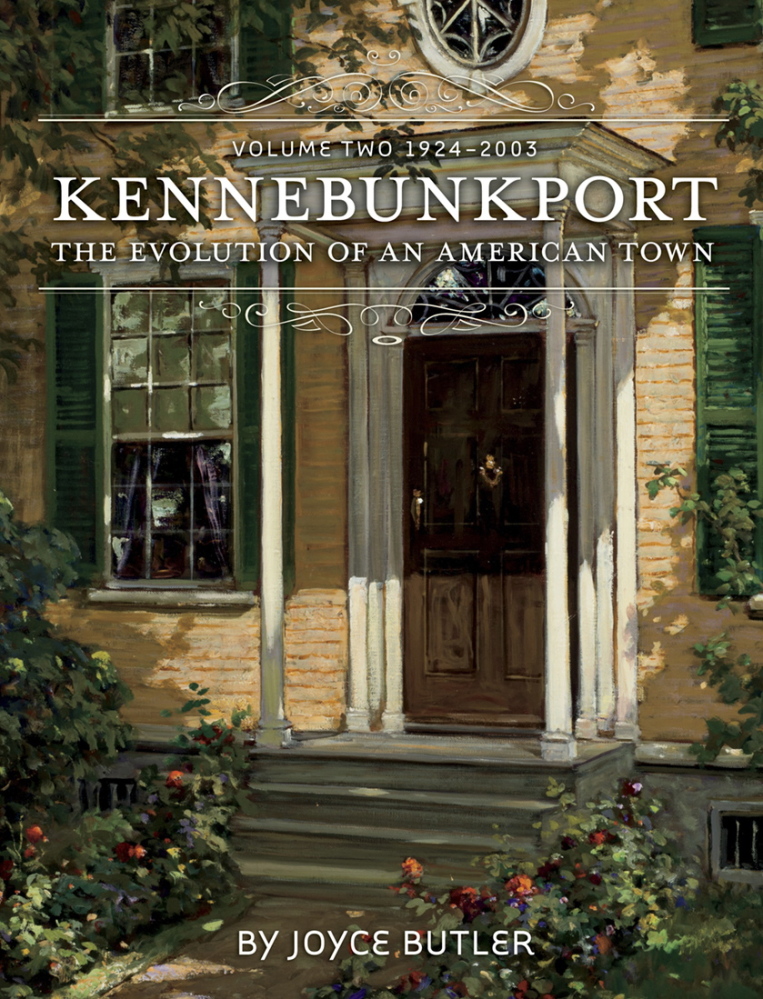The second volume of native historian Joyce Butler’s “Kennebunkport: The Evolution of an American Town” has reached print, and there is reason for general readers to celebrate and students and scholars to mark it well. Here is a carefully researched, thoughtfully organized and boldly illustrated companion piece to one of the best town histories I have read. The first volume covered 327 years, ending in 1923. The second examines the 80 years following.
The shorter time span allows the author room to focus more intently and that is good, for more and stranger things have occurred since than anyone living in 1923 might have imagined.
President George H.W. and Barbara Bush, longtime summer residents, provided the introduction for the first volume, but it is in this volume that their lives and impact on Kennebunkport are thoroughly scrutinized. This is not a presidential puff piece. Long before the “summer White House” was established in town, writers Booth Tarkington and Kenneth Roberts were using it as a model for their popular novels “Mirthful Haven” (1930) and “Arundel” (1930). Both authors would win Pulitzer Prizes. Roberts is still known as the father of the modern historical novel.
Then, there are the visual artists: Abbott F. Graves, whose painting “House of 1812” graces the cover; Louis Norton, who sought to capture a fast-fading “old” New England; and watercolorist Eliot O’Hara, who taught at Goose Rocks Beach and whose more upbeat work attracted wealthy, well-connected students from “leading New England families.”
Any town historian worth his or her salt would, of course, have hit these high notes, but Butler does not ignore the low notes, such as the 1940 clash between townsfolk and newly arrived Jehovah Witnesses. Members of that faith were decried for refusing to pledge allegiance to the flag, were viewed as Nazi sympathizers, and were said to “push right into your house.” Harassed, a church leader injured two would-be attackers on his lawn. He was arrested and a mob burned the Kingdom Hall. The Portland Press Herald noted then: “The mob in Kennebunk has more in common with the Nazis than do the members of the sect … We do not need ourselves to break the fundamental laws on which this Country was founded.”
Many townspeople deplored such incidents. But recall that in 1923, 800 Klansmen had met in Kennebunkport’s town hall. Yet the town also sustained high art and literature, political and social achievement and engagement on issues of education and transportation.
In 15 chapters, Butler follows the townspeople through the Roaring Twenties, the Great Depression, World War II, and the era of being known as the “President’s Town.” There is the citizens’ reaction to being cast as characters in Tarkington’s “Mirthful Haven” – they still liked him, but not the book – to the decline of the Cape Porpoise fishery, and to the end of the railroad and the trolley that once brought workers from nearby towns and summer people from away.
There are only a handful of professional historians who could have carried off a book like this so well, and only a resident who has studied the community for decades could write this particular masterpiece.
It truthfully shows “the evolution of an American town” in sweep and detail. It will be read and quarried long into the future.
William David Barry is a local historian who has authored/co-authored seven books, including “Maine: The Wilder Side of New England” and “Deering: A Social and Architectural History.” He lives in Portland.
Copy the Story LinkSend questions/comments to the editors.



Success. Please wait for the page to reload. If the page does not reload within 5 seconds, please refresh the page.
Enter your email and password to access comments.
Hi, to comment on stories you must . This profile is in addition to your subscription and website login.
Already have a commenting profile? .
Invalid username/password.
Please check your email to confirm and complete your registration.
Only subscribers are eligible to post comments. Please subscribe or login first for digital access. Here’s why.
Use the form below to reset your password. When you've submitted your account email, we will send an email with a reset code.